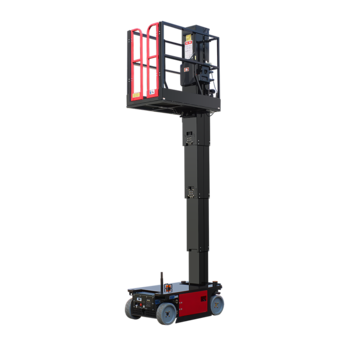In the field of aerial work, the design and manufacturing quality of push around vertical lifts are key factors in ensuring their stability. High-quality materials and sophisticated manufacturing processes not only improve the structural strength of the equipment, but also significantly enhance its stability. When choosing push around vertical lifts, it is recommended to give priority to brands and models that have been rigorously tested and certified. In the design process of such equipment, important factors such as load distribution, center of gravity position and wind resistance are usually fully considered. In addition, the quality of the chassis design is directly related to the support capacity of the equipment to ensure stability under various ground conditions. The width and center of gravity height of the chassis are key parameters affecting the stability of the equipment. Reasonable design can effectively reduce the risk of rollover.
The professional training and skill level of the operator also have a profound impact on the safe use of push around vertical lifts. Operators should receive systematic training and master the operating procedures and safety precautions of the equipment. The training content should cover the assessment of the working environment, operating skills under different conditions, and the ability to deal with emergencies. Skilled operators can judge the stability of the equipment in a timely manner during use and avoid working under unsafe conditions. In addition, regular refresher training is also necessary to ensure that operators always have the latest safety knowledge and skills to complete aerial work efficiently and safely.
Environmental factors have a significant impact on the stability of push around vertical lifts in actual operations. Before operation, operators need to conduct a comprehensive assessment of the operating environment, including ground conditions, wind speed, and weather changes. To ensure the stability of the equipment, push around vertical lifts should be placed on a flat, solid ground and avoid using them on soft or uneven ground. In environments with high wind speeds, push around vertical lifts should be used with extreme caution and operations should be suspended when necessary to prevent strong winds from causing the equipment to tilt or overturn. For aerial work, environmental changes can quickly affect the stability of the equipment, so operators must always pay attention to the surrounding environment and make timely adjustments.
Regular equipment maintenance and inspection is another important part of ensuring the stability of push around vertical lifts. During use, mechanical parts may affect the stability of the equipment due to wear or aging. Regularly check key components such as the hydraulic system, tires, chassis and support legs to ensure that they are in good condition and can work properly. The replacement of hydraulic oil, inspection of hydraulic lines, and monitoring of tire pressure and wear are all details that cannot be ignored during maintenance. In addition, the stability of the work platform also needs to be checked regularly to ensure that the guardrails are intact and the lifting mechanism operates smoothly. Through regular maintenance, potential problems can be discovered in time to avoid failures during operation, thereby ensuring the stability of the equipment.
Reasonable load management is also an important measure to ensure the stability of push around vertical lifts. In aerial operations, overloading is one of the main causes of equipment instability and accidents. Operators must strictly follow the load limits of the equipment and must not increase the operating load at will. Before the operation, the weight of the operator and his tools must be accurately assessed to ensure that the total weight is within the safety range of the equipment. In addition, when performing multi-person operations, the positions should be reasonably allocated to avoid concentrated weight that causes the center of gravity of the equipment to shift, thereby affecting stability.










 Español
Español















